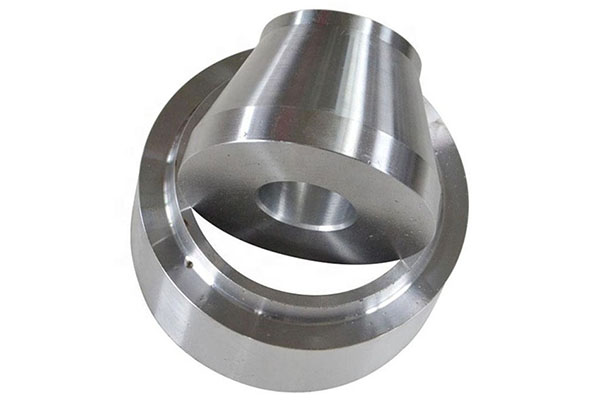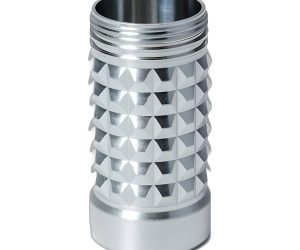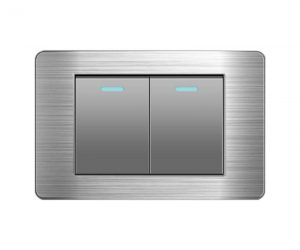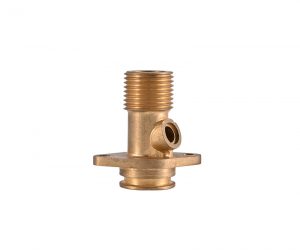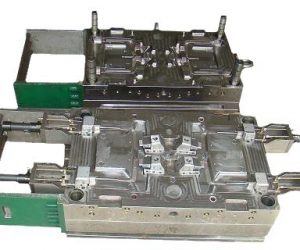1. Introduction: The Rise of Rapid Prototyping in Modern Manufacturing
In the fast - paced world of modern manufacturing, rapid prototyping has emerged as a game - changing technology. It has revolutionized the product development cycle, offering a plethora of benefits that have become indispensable to companies across various industries.
1.1 The Concept of Rapid Prototyping
Rapid prototyping, at its core, is the process of quickly creating a physical model or prototype of a product from a digital design. This is achieved through the integration of multiple advanced technologies, such as 3D printing, computer - numerical control (CNC) machining, and vacuum casting. Instead of spending months or even years in traditional prototyping methods that involve complex tooling and long - lead times, companies can now have a tangible prototype in a matter of days or weeks.
For example, in the past, developing a new automotive part would require the creation of expensive molds and dies, which could take months to fabricate. With rapid prototyping, an engineer can design the part in a computer - aided design (CAD) software, and within a short time, have a 3D - printed or CNC - machined prototype in hand for testing and evaluation.
1.2 The Significance of Rapid Prototyping in Product Development
1.2.1 Faster Design Iteration
One of the most significant advantages of rapid prototyping is the ability to iterate designs rapidly. In traditional manufacturing, making design changes during the prototype phase can be extremely costly and time - consuming. However, with rapid prototyping, engineers can quickly modify the digital design and produce a new prototype. This allows for a more efficient exploration of different design concepts, leading to better - optimized products.
A consumer electronics company, for instance, can test different shapes and sizes of a smartphone case prototype in a short period. By getting feedback from users on these prototypes, they can make design improvements and produce new prototypes quickly, ultimately resulting in a more user - friendly and aesthetically pleasing product.
1.2.2 Cost Reduction
Rapid prototyping helps in reducing costs in several ways. Firstly, by enabling early detection of design flaws, companies can avoid costly mistakes during mass production. Secondly, since it eliminates the need for expensive tooling in the prototype stage, the overall cost of product development is significantly reduced. For Yigu Technology example, a small - scale startup developing a new medical device can use rapid prototyping to create prototypes at a fraction of the cost of traditional methods. This allows them to test their product concept and make improvements without breaking the bank, which is crucial for their survival and growth.
1.2.3 Concept Validation Before Mass Production
Before investing large amounts of capital in mass production, companies can use rapid prototypes to validate their product concepts. This involves conducting various tests, such as functionality tests, ergonomic tests, and market - testing with potential customers. A toy company, for example, can create a rapid prototype of a new toy and conduct focus group tests with children. Based on the feedback, they can make necessary adjustments to the design, ensuring that the final product meets the needs and preferences of their target market.
1.3 The Role of Leading Companies in the Rapid Prototyping Landscape
There are several companies at the forefront of the rapid prototyping industry, driving innovation and setting the standards for the field. These companies leverage state - of - the - art technologies and have highly skilled teams of engineers and designers. They offer a wide range of services, from basic 3D printing to complex multi - material prototyping and high - precision CNC machining. Some of these leading companies have also developed their own proprietary materials and software, further enhancing the capabilities of rapid prototyping. In the following sections, we will explore these top companies in detail, analyzing their technologies, applications, and contributions to different industries such as aerospace, healthcare, and automotive.
2. Key Players in Rapid Prototyping: A Global Overview
The rapid prototyping market is highly competitive, with companies from around the world vying for a share of this growing industry. These companies are not only at the forefront of technological innovation but also play a crucial role in shaping the future of manufacturing across various sectors. Let's take a closer look at some of the leading companies in different regions.
2.1 North American Leaders
| North American Company | Technology Focus | Notable Achievements/Unique Offering | Key Applications |
| 3D Systems | SLA, SLS, DMLS | Developed the first commercial 3D printer in 1986 | Aerospace components (e.g., GE’s fuel nozzles), medical implants |
| Stratasys | FDM, PolyJet | Soluble support materials for complex geometries | Produced 10,000+ custom jigs for Airbus, cutting lead time by 90% |
| Proto Labs | Medical and automotive prototyping | 3D - printed patient - specific cranial implants with 99% accuracy | Medical implants, automotive components |
2.2 European Innovators
| European Company | Technology/Services | Milestone/Unique Feature | Key Applications |
| EOS | SLS for industrial - grade plastics and metals | Certified 3D - printed titanium parts for Airbus A350 XWB | Aerospace components, industrial parts |
| Materialise | CNC machining, injection molding, and 3D printing | 24 - hour turnaround for prototype parts | Consumer electronics, automotive, medical |
2.3 Asian Powerhouses
| Asian Company | Position/Expertise | Key Applications | Clients |
| Farsoon Technologies | China’s leading rapid prototyping company with 700+ patents | Aerospace titanium components and dental crowns | Aerospace and dental industries |
| Evonik | High - temperature alloy powders for laser sintering | Aerospace and energy sectors | Boeing and GE Aviation |
| Yigu Technology | Hybrid prototyping combining 3D printing and CNC finishing | Electronic components, mechanical parts | Multiple industries requiring high - precision parts |
3. Technology Breakdown: How Top Companies Excel
3.1 3D Printing (Additive Manufacturing)
3D printing, also known as additive manufacturing, has been a cornerstone technology in rapid prototyping. It allows for the creation of three - dimensional objects by depositing materials layer by layer based on a digital model. Different 3D printing technologies have their own unique characteristics, and top companies have mastered these to offer high - quality prototyping services.
A comparison of these companies' 3D printing technologies in terms of key parameters is shown in the following table:
| Company | Technology | Material Range | Precision |
| 3D Systems | SLA/SLS | Resins, metals, composites | ±0.05mm |
| Stratasys | FDM/PolyJet | ABS, PLA, rubber - like materials | ±0.1mm |
| EOS | SLS | Nylon, aluminum, stainless steel | ±0.1mm |
3.2 CNC Machining
CNC machining is another crucial technology in rapid prototyping, especially for creating high - precision parts from a variety of materials, including metals, plastics, and composites.
The Role of 5 - Axis CNC Machines
5 - axis CNC machines have become increasingly popular among top rapid prototyping companies due to their ability to produce complex geometries with high precision. These machines can move the cutting tool along five different axes simultaneously: three linear axes (X, Y, and Z) and two rotational axes (A and B or C). This allows for the machining of parts with complex curved surfaces, undercuts, and internal features in a single setup.
For example, in Sweden, there are companies that use 5 - axis CNC machines to produce complex metal prototypes. These machines can achieve a tolerance of ±0.02mm, which is extremely precise. One such company has clients like Volvo. They produce automotive part prototypes for Volvo, such as engine components and suspension parts. The high precision of the 5 - axis CNC machines ensures that the prototypes accurately represent the final design, allowing for effective testing and validation before mass production.
The advantages of 5 - axis CNC machining in rapid prototyping include:
- Reduced Setup Times: Since the part can be machined from multiple sides in a single setup, there is no need to re - position the part on the machine, which reduces the time spent on setting up the machining operations. This is crucial for rapid prototyping, where time is of the essence.
- Improved Surface Finish: The ability to continuously adjust the orientation of the cutting tool allows for a more efficient and uniform cutting action, resulting in a better surface finish on the machined part. This is important for prototypes that need to closely mimic the appearance and feel of the final product.
- Enhanced Design Freedom: Designers can create more complex and innovative part designs knowing that 5 - axis CNC machining can bring these designs to life. This has led to the development of more efficient and functional products in industries such as aerospace, where lightweight and high - strength components with complex geometries are in high demand.
3.3 Vacuum Casting
Vacuum casting is a rapid prototyping process that is particularly useful for creating small - batch prototypes that closely resemble the final product.
Process and Applications
The vacuum casting process involves creating a silicone mold from a master model. Once the mold is created, a liquid resin, typically a polyurethane - based material, is poured into the mold under vacuum conditions. The vacuum helps to remove any air bubbles from the resin, ensuring a smooth and void - free casting. The resin then cures, and the part is removed from the mold.
This process can produce up to 100 units per mold, making it suitable for low - volume production runs or for creating multiple prototypes for testing and market feedback. The parts produced by vacuum casting can closely mimic the appearance and properties of injection - molded parts. For example, they can have a textured, glossy, or matte surface finish, depending on the requirements.
In the automotive industry, vacuum casting is used to create prototypes of interior components such as dashboards, door panels, and center consoles. These prototypes can be used to test the fit, finish, and ergonomics of the designs before investing in expensive injection - molding tooling. In the consumer electronics industry, vacuum - cast prototypes of smartphone cases and tablet housings can be used to evaluate the aesthetics and user - friendliness of the designs.
4. Industry Applications and Impact
The impact of rapid prototyping is far - reaching, with significant applications across multiple industries. Let's explore how leading companies are making a difference in healthcare, aerospace, and automotive sectors.
4.1 Healthcare
| Healthcare Company | Application | Impact |
| Materialise | 3D - printed surgical guides | Reduces orthopedic surgery time by 25% |
| Blatchford | Customized prosthetics using SLA technology | Provides well - fitting prosthetics for amputees |
4.2 Aerospace
| Aerospace Company | Application | Impact |
| GE Additive | 3D - printed fuel nozzles for LEAP engines | Cuts part count by 90% |
| Airbus | HP Multi Jet Fusion for lightweight cabin components | Reduces aircraft weight, improves fuel efficiency |
4.3 Automotive
- Ford
- Rapid Prototyping of Engine Parts with SLS: Ford uses Selective Laser Sintering (SLS) to rapidly prototype engine parts. SLS allows Ford to quickly produce functional prototypes of engine components such as cylinder heads and intake manifolds. By using SLS, Ford has been able to reduce the development cycles of these parts by 50%. This means that new engine designs can be tested and refined much faster, allowing Ford to bring new and improved engines to market more quickly. The ability to quickly iterate on engine part designs also leads to more efficient and powerful engines.
- Tesla
- CNC - Machined Aluminum Prototypes for Battery Components: Tesla uses CNC - machined aluminum prototypes for its battery components. CNC machining offers high precision and the ability to work with a variety of materials, including aluminum. Aluminum is a popular choice for battery components due to its lightweight and high - conductivity properties. Tesla's use of CNC - machined aluminum prototypes allows for the production of battery components that are both lightweight and highly functional. These prototypes can be tested extensively to ensure the safety and performance of Tesla's battery systems before mass production.
| Automotive Company | Application | Impact |
| Ford | Rapid prototyping of engine parts with SLS | Reduces development cycles by 50% |
| Tesla | CNC - machined aluminum prototypes for battery components | Produces lightweight and functional battery components |
Conclusion
In Yigu Technology conclusion, the rapid prototyping landscape is teeming with innovative companies that are revolutionizing the way products are developed across industries. These leading companies, whether in North America, Europe, or Asia, have harnessed the power of advanced technologies such as 3D printing, CNC machining, and vacuum casting to offer high - quality, efficient, and cost - effective prototyping solutions.
3D printing, with its various technologies like SLA, SLS, FDM, and PolyJet, has enabled the creation of complex and customized prototypes with a high degree of precision. CNC machining, especially with 5 - axis capabilities, has provided the means to produce high - accuracy parts from a wide range of materials. Vacuum casting, on the other hand, offers a cost - effective way to create small - batch prototypes with a high - quality surface finish.
In the healthcare industry, rapid prototyping has led to the development of customized surgical guides, implants, and prosthetics, improving patient outcomes and surgical efficiency. In aerospace, it has allowed for the production of lightweight and high - performance components, reducing fuel consumption and enhancing aircraft performance. In the automotive sector, rapid prototyping has shortened the development cycles of engine parts and battery components, enabling companies to bring new and improved products to market faster.
For companies looking to embark on the product development journey, choosing the Yigu Technology right rapid prototyping partner is crucial. By considering factors such as the company's technological expertise, industry experience, and track record of success, businesses can ensure that they are able to leverage the full potential of rapid prototyping to drive innovation, reduce costs, and gain a competitive edge in the market. As technology continues to evolve, the future of rapid prototyping holds even more promise, with the potential for further advancements in materials, processes, and applications.
FAQ
Q1: How do I choose the right rapid prototyping company for my project?
Look for experience in your industry, certifications, and a track record of meeting deadlines. Request case studies and DFM (Design for Manufacturability) feedback.
Q2: What materials are commonly used in rapid prototyping?
Common materials include plastics (ABS, PLA), metals (titanium, aluminum), and composites. Some firms also offer bioresorbable polymers and high - temperature resins.
Q3: Can rapid prototypes be used for functional testing?
Yes. Technologies like SLS and FDM produce prototypes with mechanical properties close to final products, suitable for stress, thermal, and fatigue testing.
